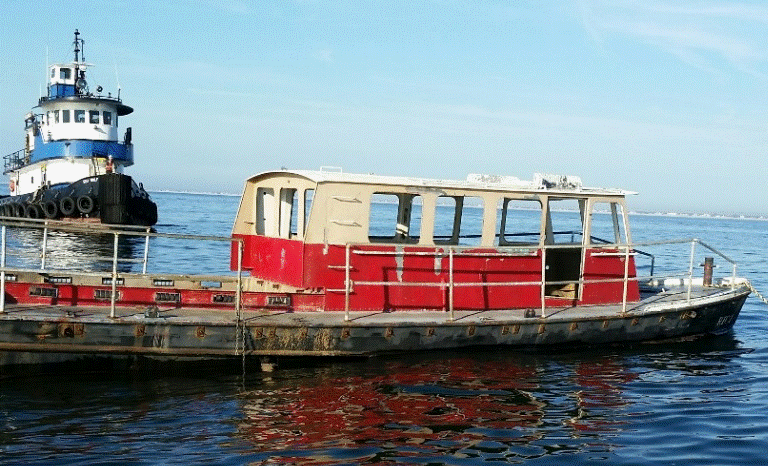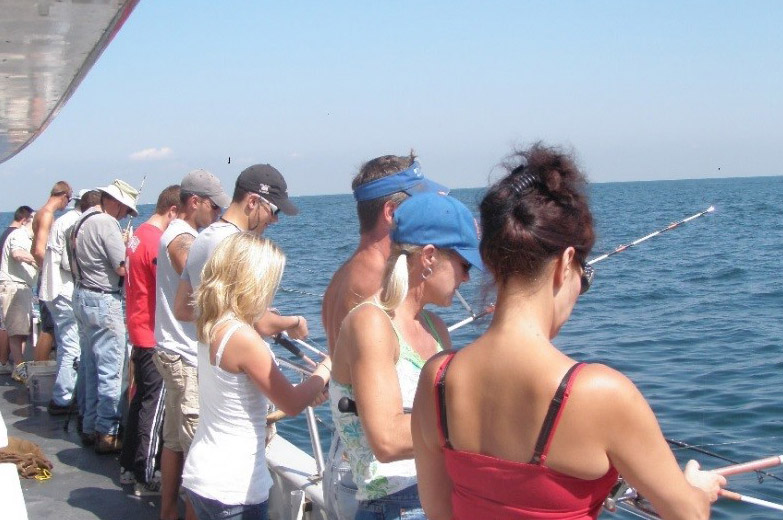DEP’S ARTIFICIAL REEF PROGRAM RESUMES DEPLOYMENTS
COMPROMISE OVER ACCESS TO REEFS RESULTS IN RESTORED FEDERAL FUNDING
 (16/P74) TRENTON – The Department of Environmental Protection’s artificial reef deployment program is back on course as a result of restoration of federal funding made possible by a compromise the Christie Administration reached between recreational anglers and commercial fishermen over access to the popular reefs.
(16/P74) TRENTON – The Department of Environmental Protection’s artificial reef deployment program is back on course as a result of restoration of federal funding made possible by a compromise the Christie Administration reached between recreational anglers and commercial fishermen over access to the popular reefs.
The DEP’s Division of Fish and Wildlife plans to sink as many as 10 vessels by the end of fall to become part of the its network of artificial reefs. Two ships were deployed earlier this summer and the third deployment took place today at the Axel Carlson Reef, just southeast of Manasquan Inlet, with the sinking of the 65-foot crew boat NY Harbor Charlie.
“Artificial reefs create important habitat for many types of marine life, and attract fish that are popular with recreational anglers,” said Commissioner Bob Martin. “Our artificial reefs are an important part of the economy of the Jersey Shore because they are so popular with anglers as well as sport divers. We are grateful to all our partners in the recreational and commercial fishing industries for working with us to get this program back on track.”
The U.S. Fish and Wildlife Service is providing $119,250 to the artificial reef program because the DEP was able to reach a compromise that allows commercial interests to have continued access to portions of two reefs in state waters and calls for the construction of a new reef for recreational fishing, also in state waters. State waters extend three miles from the shoreline.
The U.S. Fish and Wildlife Service had suspended the funding due to concerns that commercial fishing was intruding on and hampering recreational fishing on artificial reefs in state waters, which are funded by excise taxes on recreational fishing gear and motor boat fuel. The compromise was reached in 2013, and codified in rule changes that were adopted by the DEP in November 2015.
Under the new rule, commercial fishing operations are permitted to continue using portions of two existing reefs in state waters off Sandy Hook and Manasquan. State waters extend to three miles offshore. Recreational anglers will continue to have access to all portions of these reefs.
 The DEP is matching the federal money for the program with $39,750 from state appropriations and a donation from a firm that creates concrete reef structures.
The DEP is matching the federal money for the program with $39,750 from state appropriations and a donation from a firm that creates concrete reef structures.
As part of its efforts this year, the DEP’s artificial reef program will perform an archeological survey on the new reef called for under the compromise, which will be developed off Manasquan Inlet. The program also will be conducting an archeological survey for construction of an additional reef in Delaware Bay, which the Division of Fish and Wildlife has been planning for years.
The Division of Fish and Wildlife currently holds permits for 15 artificial reef sites – 13 in federal waters and two in state waters. The reefs, encompassing a total of 25 square miles of ocean floor, are constructed from a variety of materials, such as rocks, concrete and steel, even old ships and barges. These materials provide surfaces for a wide diversity of marine organisms to grow, ultimately providing food and habitat for many species of fish and shellfish. The reefs are placed to be within easy reach by boat of 12 inlets.
DEP studies have shown that these materials are colonized quickly with organisms such as algae, barnacles, mussels, sea stars, blue crabs, and sea fans that attract smaller fish which, in turn, attract black sea bass, tautog, summer flounder, scup, lobster and other sought-after species.
“The artificial reef program has a long and proven track record of enhancing ecological diversity and productivity,” said Brandon Muffley, Administrator of the Division of Fish and Wildlife’s Marine Fisheries Administration. “Our studies have shown that colonization begins in as little as a couple weeks.”
As part of a $250,000 broader assessment of marine resources currently under way, the DEP and Rutgers University will be evaluating which artificial reef structure materials attract the most fish.
Artificial reefs are extremely popular with anglers and divers, contributing to the state’s economy through the creation of tourism opportunities and jobs. New Jersey’s commercial fishing industry ranks 7th in the nation in retail sales, and supports $327 million in salaries and wages and nearly 13,000 jobs.
Recreational saltwater fishing brings in more than $640 million in retail sales and is directly responsible for nearly 10,000 jobs and more than $242 million in tax revenues, including $165 million in state and local taxes.
The Manasquan River Marlin and Tuna Club and the Ann E. Clark Foundation/The Sportfishing Fund were key partners in today’s deployment of the NY Harbor Charlie.
For more information on New Jersey’s Artificial Reef Program, visit: http://www.nj.gov/dep/fgw/artreef.htm
For related DEP news releases, visit: www.nj.gov/dep/newsrel/2015/15_0100.htm, www.nj.gov/dep/newsrel/2013/13_0025.htm and www.nj.gov/dep/newsrel/2015/15_0012.htm
DEP Photos/Top: NY Harbor Charlie being deployed; bottom: Charter fishing at reef site